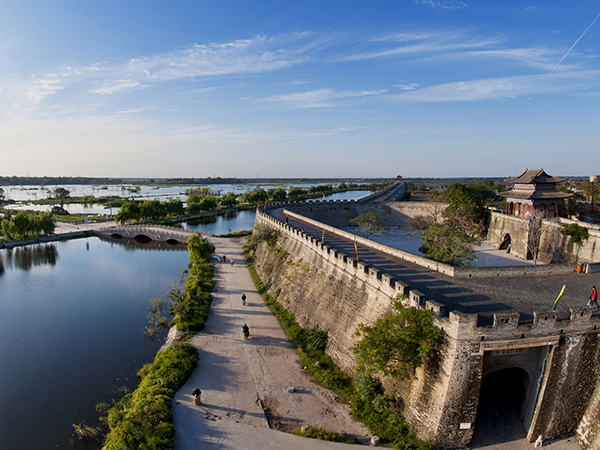It is now a national key cultural relics protection unit. In the Spring and Autumn Period, it was called Quliang, and the Han belonged to Guangping Kingdom and Guangping County. In the 20th year of Taihe in the Northern and Southern Dynasties (496), Guangping County moved to Quliang City. The Sui Dynasty was called Guangnian and Yongnian City, and the Tang Dynasty was also called Ming The prefecture was governed by Guangping Road in the Yuan Dynasty, and Guangping Prefecture was governed by the Ming and Qing Dynasties. The city wall of Guangfu was a Tucheng before the Yuan Dynasty. The existing city wall is the Ming Dynasty city wall, with east and west porcelain city, four city gates, turrets, towers and other buildings, which embody the architectural art of ancient city walls in my country. The streets in the city have maintained the scale and orientation of the streets in the Ming Dynasty, and many houses in the Qing Dynasty are well preserved. Since the establishment of the county in the Western Han Dynasty, the city has been the county seat. Since then, the county, or state, or county, and its administrative offices were all here, becoming the political, economic, military, and cultural center of southern Hebei at that time. In the second year of Tang Wude (619), Dou Jiande established his capital in the city, and his country was named Xia. Lu Tai in the Ming Dynasty contained: "Guangzhou County was connected to Yanzhuo in the north, Zheng Wei in the south, Qilu in the east, Qin and Jin in the west, and was known as a metropolis of Zhanghe in history." The Qing Dynasty "Yongnian County Chronicles" contained: "Old The city wall was built by a man, with a circumference of 6 li and 240 steps. In Yuan Dynasty, it was expanded to 9 li and 13 steps, square, 3 feet 5 feet high, 2 feet 5 feet wide. Four gates, Dongyue Yanghe, Xiyue Baohe, Nanyue It was called Zhenyuan in Yangbei. It was rebuilt during the Chenghua reign of the Ming Dynasty. In the 21st year of Jiajing (1542), the city walls were heightened and the walls were built with bricks and stone. The towers, 4 turrets and 26 shops were built on the building. Export. In the forty-third year of Jiajing (1564), the prefect of Cui Dade added 4 urns for waterproofing and warfare. In the 12th year of Chongzhen (1639), the number of old stacks was changed to 876, and 57 shops were added. The stack wall is 3 feet, and the heavy gate building sculls are added outside each urn city. In the 7th year of Emperor Kangxi in the Qing Dynasty (1668), the city was flooded and several places were dumped. There were repairs in the later period. In the 7th year of Tongzhi (1868), the pits were added Build East, West and Beiguan Pavilions.” The streets in the city are the Fourth Avenue, Eight Streets, and 72 Alleys.




